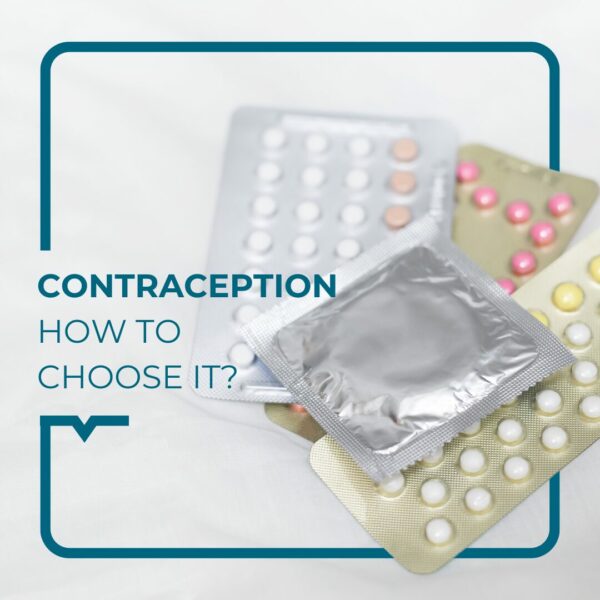Since this morning, Marie has had a sore throat. She feels tired and feverish. She recognizes the signs of tonsillitis but has heard that this infectious disease can have many origins, with different causes and treatments.
Hello, this is Dr Joy.
Let’s take a look at the two main types of tonsillitis: viral and bacterial, and their characteristics.
I. What is tonsillitis ?
The human body is equipped with several lymphoid organs, which play an important role in the immune system’s defense against external viruses and bacteria.
These include the tonsils: located at the back of the throat, they filter out any infectious agents that might enter through the mouth or nose.
When the tonsils become inflamed, tonsillitis occurs: a common illness, usually not serious, but causing several uncomfortable symptoms including sore throat, difficulty swallowing, coughing, cold or fever. They can even become very red or covered with small white spots.
Although the signs are easy to recognize, a medical diagnosis is still essential to determine the cause of tonsillitis.
II. The different types of tonsillitis
There are several types of tonsillitis with different origins: viral and bacterial.
- Viral tonsillitis is caused by a contagious virus that is spread by someone who is ill (physical contact, sneezing, coughing, etc.) This is the most common type of tonsillitis. It can usually be cured in 5 to 7 days. There is no such thing as a “tonsillitis virus”, but inflammation of the tonsils can be caused by several types of viruses: adenovirus, enterovirus, herpes virus or rhinovirus, for example. It’s a highly contagious condition, so people who have it should wash their hands regularly, wear a mask and use disposable tissues to help protect their family and friends.
- Bacterial tonsillitis is an infection caused by bacteria. In most cases, it is caused by group A beta-hemolytic streptococcus. This type of sore throat is less common. In addition to the “classic” symptoms (sore throat, difficulty swallowing, etc.), patients with bacterial tonsillitis may have a higher fever and swollen glands in the neck.
III. How is tonsillitis diagnosed?
It is important to see a doctor as soon as the first symptoms appear. There are two steps to a clinical examination to diagnose it:
- Visual and tactile examination: the doctor looks at the throat and tonsils, palpates the neck and jaw to detect any lymph nodes, and takes the patient’s temperature.
- Streptotest: this is the only way to determine whether the sore throat is viral or bacterial. After this test, the doctor can prescribe the appropriate treatment.
Using Streptotest to determine the origin of tonsillitis
The symptoms of tonsillitis, whether bacterial or viral, are much the same. Doctors or pharmacists cannot detect the origin of tonsillitis without carrying out a Streptotest or TROD (“Rapid Diagnostic Orientation Test”), which detects the presence of bacteria.
The result of this test is used to determine whether the tonsillitis is caused by a virus or a bacterium.
The test is quick and painless. The healthcare professional takes a sample from the tonsils using a long cotton swab, which is then dipped into a tube containing a small amount of reagent liquid. He or she then adds a test strip and waits 5 minutes for the result.
- If the strip shows one line: the test is negative, which means that the tonsillitis is viral.
- If the strip shows two lines: the test is positive, a bacterium is present. The tonsillitis is bacterial in origin.
IV. Medical and therapeutic solutions for treating tonsillitis
Treatment varies according to the origin of the tonsillitis.
Treatment of viral tonsillitis
There is no point in prescribing antibiotics for viral tonsillitis: they are ineffective if no bacteria are present. To relieve pain and symptoms, the doctor will recommend paracetamol. It must be taken for a short time (no more than 4 days) and doses must be respected: for adults weighing more than 60 kg, 1 tablet every 6 hours, 1 g per dose and no more than 5 g per day.
Treatments based on non-steroidal anti-inflammatory drugs are not recommended as they increase the risk of complications.
Treatment of bacterial tonsillitis
If the test reveals the presence of bacteria, antibiotics must be prescribed. Their role is to eliminate the bacteria responsible for the tonsil infection and reduce the associated symptoms. For the antibiotic treatment to be effective, it is important to follow the prescription: number of doses, duration, etc.
Even if the patient feels an improvement in their condition, they should continue to take their tablets until the end of the treatment to eliminate the bacteria and prevent recurrences. If you have any doubts or questions, you should seek medical advice.
Therapeutic treatments
In addition to antibiotic or drug treatment, there are natural tricks that can help reduce the symptoms:
- Propolis: in spray, tablet, or gum form, it reduces inflammation thanks to its antiseptic properties. It helps to restore local immunity.
- Essential oils: tea tree, ravintsara and peppermint have analgesic and anti-inflammatory properties. They can be taken as an herbal tea (add a few drops in hot water), or as a gargle.
As a preventive measure, during the periods most affected by the spread of viruses and bacteria, you can boost your immune system by increasing your intake of vitamins from the C and D groups, or by taking a course of probiotics to maintain a balanced intestinal flora.
V. Our advice for relieving the symptoms of tonsillitis
In addition to these natural tips, a number of everyday habits can help reduce the pain and fever associated with tonsillitis:
- Eat cold foods such as ice cream for an anaesthetic effect
- Avoid acidic or overly spicy food to avoid inflammation
- Do not smoke
- Gargle with salt water to disinfect
- Drink plenty of water
- Take a rest
- Consult a doctor at the first sign of symptoms
Points to remember about tonsillitis
- Tonsil infection caused by a virus (viral tonsillitis) or bacteria (bacterial tonsillitis)
- Main symptoms: sore throat, difficulty swallowing, cough, fever…
- A medical consultation is essential to determine the correct treatment based on the results of the Streptotest (or TROD) test.
- For effective treatment of tonsillitis: follow the prescribed treatment to the end, get plenty of rest and use natural methods to relieve the pain.
Tonsillitis is usually a benign condition, but it does require medical attention. In general, it can be cured in 3 to 7 days.
Poorly treated bacterial tonsillitis can recur or lead to other problems, such as an abscess near the tonsils, or acute rheumatic fever (in rare cases). In children, if tonsillitis is too frequent, some symptoms may persist, such as enlarged tonsils, breathing difficulties or night-time snoring. In this case, an appointment with an ENT specialist is advisable for a possible removal of the tonsils (tonsillectomy). Other conditions can cause symptoms like those of tonsillitis. This is the case with mononucleosis, an infectious disease that causes a sore throat and the appearance of white spots on the tonsils. A medical diagnosis is essential to differentiate between the two and find the right treatment.
SOURCES :
https://www.elsan.care/fr/pathologie-et-traitement/maladies-generale/angine-causes-traitements
https://www.santemagazine.fr/traitement/medicaments/antibiotiques/comment-soigner-une-angine-171218



